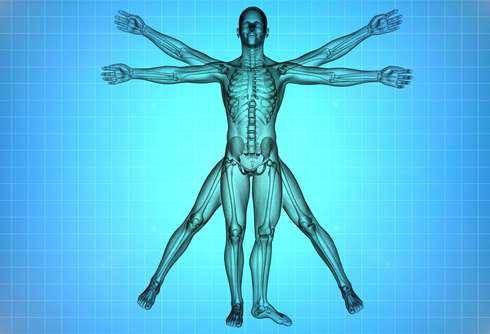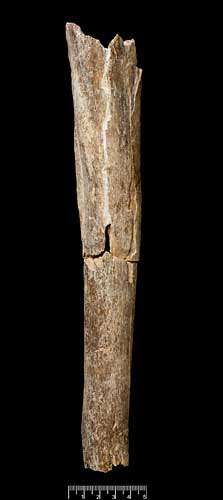Evolution pushes on as European men grow taller

A new study shows that the average height of European men has increased by nearly 11cm since the 1870s. Museum human origins expert Prof Chris Stringer explains why height fluctuates over time.
New research has shown that the average height of men across 15 European countries increased by nearly 11cm between the 1870s and 1980.
In Britain, the average height of a 21-year-old man increased from 1.67m (5ft 5in) in the 1870s to 1.77m (5ft 10in) in 1971-75.
Researchers from the economics departments at the University of Essex and the Australian National University in Canberra said this represents a dramatic improvement in the health of the general population.
People have generally been growing taller across Europe, the Far East and Japan since Roman times, predominantly due to better nutrition.
Better diet and less illness
This most recent growth spurt, however, spans a period of time that covered both World Wars and the Great Depression, suggesting the biggest cause was 'an improving disease environment', reflected in falling infant mortality rates.
This would have been the result of ongoing improvements in sanitation, hygiene and nutrition, as well as smaller family size, which means fewer mouths to feed.
Commenting on the new research, Prof Chris Stringer, human origins expert at the Natural History Museum, said that height has always fluctuated over time.

Early modern humans in Africa were tall, whereas Neanderthals who lived in Europe were relatively short.
'There is always a variation in height within a species," Prof Stringer said, 'but genetic makeup determines what height each of us ideally should be .
'The genes controlling height are also subject to natural selection, so body shape can change through time as a species continues to adapt to it environment.'
Living in a hot, dry environment, it's advantageous to be tall and slim in order to lose heat. In cold climates, it's better to be short and stocky to better retain heat.
Genetically, northern Europeans have tended to be tall in the past few thousand years, but height is always subject to environmental limitations.
Disease or lack of nutrition can interfere with genetic programming and mean we won't achieve our target height.
People living in the middle ages, for example, who were genetically similar to us and predisposed to be tall, were in fact short because of childhood disease and a limited diet.
'This doesn't mean that if we carry on eating, we will keep growing taller', said Prof Stringer.
'There is a limit, based on our genes, to how big the tallest will be and how small the smallest will be, based not only on our parents' genes but genes going back through time.'
Early humans to visit Museum
Realistic life-sized models illustrating the different builds of ancient humans will be on display in the Museum in an upcoming exhibition, Britain: One Million Years of the Human Story.
Among the models will be a tall early modern human from 30,000 years ago, built for endurance running, and a short, stockier Neanderthal.
The real fossil tibia (shin bone) of Boxgrove Man from 500,000 years ago will also be on show.
The exhibition opens in February 2014.
More information: Oxford Economic Papers: How have Europeans grown so tall?
















